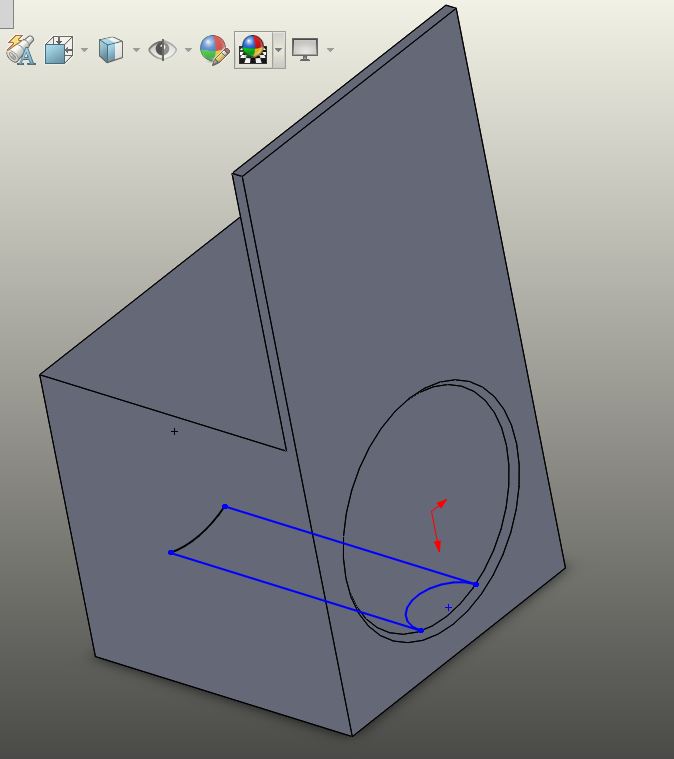BME100 f2017:Group15 W1030 L6
| Home People Lab Write-Up 1 | Lab Write-Up 2 | Lab Write-Up 3 Lab Write-Up 4 | Lab Write-Up 5 | Lab Write-Up 6 Course Logistics For Instructors Photos Wiki Editing Help | ||||||
|
OUR COMPANY
Our Brand Name LAB 6 WRITE-UPBayesian StatisticsOverview of the Original Diagnosis System 16 teams of 4 or 5 students each diagnosed 32 patients total. Each group was given two patients to test for a disease associated SNP. Three DNA samples were provided for each patient to insure the most accurate results. The DNA samples, a buffer solution, a positive and negative control, and calibration solutions were also provided. The calibration solutions were first imaged through the PCR and analyzed in ImageJ. Next, the patient DNA samples were imaged through PCR and analyzed in ImageJ. The micropipette gave the best and most accurate results of the samples by replacing the tip every time as to not mix the samples. Bayesian statistics were then used to test the reliability of the data. In total, there were 96 PCR's and out of those, 56 were positive and 39 were negative. In this first test, the probability of a positive test result given a positive PCR was calculated. In the next test, the probability of a negative test conclusion given a negative PCR was calculated. In the third test, the probability of the patient developing the disease given a positive PCR was calculated. In the final test, the probability of the patient developing the disease given a negative PCR was calculated.
Intro to Computer-Aided DesignOur Design
Feature 1: ConsumablesIt was determined that it is crucial to include all of the reagents necessary for the PCR reactions because they help amplify pieces of DNA. Thus, in this re-designed openPCR kit; PCR mix, primer soltuion, SYBR green solution, and buffer will be included. Our company will not manufacture any new consumable other than the ones provided in the kit. The complete kit will have 8 tubes of 50 μL of PCR reaction mix, another 8 tubes of 50 μL DNA/Primer mix, SYBR green solution, glass slides, and buffer. Although our package lacks of disposable pippette tips and a micropipettor it was decided that not including these two essentials in the package will lessen the cost to purchase this product by making it affordable to our customers. There will be no need to worry about the micropipettor not being included because it will be easier to buy it separately. It will also include a manual with instructions and safety precautions.
Feature 2: Hardware - PCR Machine & FluorimeterBased on the allotted class time spent using the PCR machine, there were no noticeable flaws in its design. The results of the fluorimeter were inconsistent. Since there was not a specified way to support and adjust the camera to get a consistent angle, all of the pictures were inevitably taken from different angles and the droplets in the pictures were very different sizes. Hence, the design of our fluorimeter machine was focused primarily on the most economical and convenient way to take the pictures from the same angle and distance from the droplets while reducing the need to open the box and let in light to the samples. The fluorimeter will retain its box shape. When placed on a table and facing towards the user, it will have the proximal and distal sides open by sliding upwards vertically. In the distal part of the box, there will be a rolling slide for the glass plate for the samples. To add samples to the glass plate, the user will slide the wall of the box upwards and slide the glass plate horizontally out of the box. In the proximal part of the box, there will be an adjustable mount for the user's smartphone so the camera angle can be adjusted. The mount's shape will somewhat resemble a ballot box; the long sides of the boxes will be adjustable so they can tighten or loosen with a screw to hold the phone in place. Along with physical changes to the fluorimeter, there will also be technological improvements made. Before beginning the experiment, students will have to download a free app that has features specific to the box's functionality. With the student's permission, the app will have access to the phone's camera and the student's email address. While the phone is being adjusted in the mount, the camera will be on and pointing at the target area, and the app will highlight a rough estimate of the circular region it will capture. After everything is adjusted satisfactorily, The student can press a button in the app that will activates a countdown until the pictures are taken, giving the student time to close the box and the camera to adjust to the light changes before taking pictures; the app is programmed to automatically take three pictures of each droplet. After each droplet has been photographed, the app will automatically send the pitcures to the programmed email so the pictures don't take up phone space. When changing the droplets out, students will only lift the distal wall to slide them out.
| ||||||





